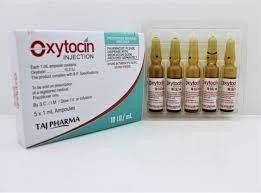A nurse is caring for a client who is postpartum and experiencing excessive vaginal bleeding. Which of the following medications should the nurse plan to administer?
Nifedipine
Terbutte
Oxytocin
Betamethasone
The Correct Answer is C
A) Incorrect- Nifedipine is a calcium channel blocker used for conditions like high blood pressure, not for controlling postpartum bleeding.
B) Incorrect- Terbutaline is a bronchodilator and is not typically used for postpartum bleeding.
C) Correct - Oxytocin is a uterotonic medication often used to control excessive bleeding after childbirth. It helps the uterus contract and reduces the risk of postpartum hemorrhage.
D) Incorrect- Betamethasone is a corticosteroid used to enhance fetal lung maturity when given to pregnant clients at risk of preterm birth

Nursing Test Bank
Naxlex Comprehensive Predictor Exams
Related Questions
Correct Answer is A
Explanation
A) Correct - Chronic hypertension is a significant risk factor for developing preeclampsia during pregnancy. Preeclampsia is characterized by high blood pressure and organ damage, typically occurring after 20 weeks of pregnancy.
B) Incorrect- Maternal age of 30 years is not a specific risk factor for preeclampsia.
However, maternal age over 40 is considered a risk factor.
C) Incorrect- A prepregnancy BMI of 19 falls within the healthy weight range and is not typically associated with an increased risk of preeclampsia.
D) Incorrect- Having a third pregnancy is not inherently a strong risk factor for preeclampsia. Women experiencing their first pregnancy are at a slightly higher risk.

Correct Answer is A,E,B,C,D
Explanation
Proper procedure for a heel stick includes:
A) Confirming the newborn's identity before any procedure. the nurse should confirm the newborn's identity by checking the identification band and asking the mother or caregiver to verify the name and date of birth.
E) The nurse should warm the newborn's heel by placing a warm compress or a heel warmer on the site for 3 to 5 minutes. This will increase blood flow and reduce pain.
B) Cleansing the site with an antiseptic to reduce the risk of infection. the nurse should cleanse the site with an antiseptic, such as alcohol or chlorhexidine, and let it air dry. The nurse should avoid using iodine, as it can interfere with some laboratory tests.
C) The nurse should pierce the newborn's heel with a sterile lancet, making sure to avoid the central area of the heel, where there are more nerves and bones. The nurse should use a single-use device that retracts automatically after use to prevent needlestick injuries.
D) The nurse should apply gentle pressure to the site with dry gauze to facilitate blood flow and collect the specimen in the appropriate container. The nurse should avoid squeezing or milking the site, as this can cause hemolysis or tissue damage.
E) The nurse should label the specimen with the newborn's name, date of birth, date and time of collection, and type of test. The nurse should also document the procedure in the newborn's chart, noting any difficulties or complications.
Whether you are a student looking to ace your exams or a practicing nurse seeking to enhance your expertise , our nursing education contents will empower you with the confidence and competence to make a difference in the lives of patients and become a respected leader in the healthcare field.
Visit Naxlex, invest in your future and unlock endless possibilities with our unparalleled nursing education contents today
Report Wrong Answer on the Current Question
Do you disagree with the answer? If yes, what is your expected answer? Explain.
Kindly be descriptive with the issue you are facing.
